The Resolution clearly states: In the process of national development, our Party and State always consider education and training, along with science and technology, as top national policies.
Many major policies and guidelines have been issued, promoting innovation and strong development of education and training, achieving important results.
Vietnam is among the 21 countries that will soon achieve the United Nations' sustainable development goals by 2030 on quality education.
However, education and training still face many difficulties and limitations and have not really become the key driving force for the country's breakthrough development.
Access to education is still low compared to developed countries; there are large differences between regions and target groups. Teaching staff, facilities, and schools in many places do not meet requirements.
The university and vocational education systems are fragmented and outdated, failing to meet the requirements of training high-quality human resources and scientific research, especially in some key sectors and fields.
Negative phenomena and formalism in education are still common. The content and curriculum of education still have many shortcomings. Moral, physical and aesthetic education have not received due attention and are not really effective.
The main causes of the above limitations are the lack of awareness and full and drastic implementation of the viewpoint that education and training is the "top national policy", the "career of the Party, the State and the entire people"; the mindset on education management and development is slow to innovate, the concept of autonomy and socialization of education is not suitable; investment resources for education are still low, the policy on resource allocation and use is ineffective, the financial mechanism is unsustainable; the regime and policies for teachers are still inadequate; the mentality of respecting titles in society is still heavy, the policy on using cadres still values degrees more than actual ability, and negative aspects in society greatly affect educational activities inside and outside of schools.
In the context of profound and comprehensive changes in the world, especially digital technology and artificial intelligence are reshaping education on a global scale, each country must redefine its vision and new strategy for the education system in the future. Our country is facing a historic opportunity for breakthrough development, the requirement of building people and human resources is very important and urgent, requiring a breakthrough in education and training development, contributing to building a new generation of Vietnamese people with patriotism and national pride, with enough courage, intelligence, capacity, qualifications and health to meet the requirements of building, developing the country and protecting the Fatherland in the new development stage.

6 guiding principles
From the above situation, the Politburo requests to focus on thoroughly grasping, drastically, synchronously and effectively implementing the following contents:
Deeply and fully understand and consistently implement the viewpoint that education and training is the top national policy, deciding the future of the nation. Developing education and training is the cause of the Party, the State and the entire people. The State plays the role of guiding strategies, creating development, ensuring resources and equity in education; ensuring enough schools, enough classes, enough teachers to meet the learning needs of the people. The whole society has the responsibility to care for, contribute resources and supervise the development of education.
Promoting the nation's tradition of studiousness, building a learning society, strongly arousing emulation movements among the people and in the whole society on learning, self-learning, continuous learning, lifelong learning for the cause of rapid and sustainable development of the country, for the future of the nation.
Close coordination between family, school and society in education and training. Learners are the center, the subject of the education and training process; school is the foundation, teachers are the driving force, deciding the quality of education and training. Implement the motto "teachers are teachers, students are students" in terms of ethics, personality, knowledge; resolutely correct negative aspects in education, respect the honor of teachers, honor teachers in society. Education ensures harmony between nationalism and eliteism, comprehensiveness and depth, nationalism and globalism. Develop education on the basis of culture, traditional national values, at the same time absorb the quintessence of humanity, international standards; educate and train Vietnamese citizens to become global citizens.
Education and training must ensure "learning goes hand in hand with practice", "theory is closely linked to practice", "school is closely linked to society". Preschool and general education are the foundation for personality formation, development of learners' qualities and capacities . Vocational education plays a key role in developing a highly skilled workforce. University education is the core for developing highly qualified human resources and talents, promoting the development of science, technology and innovation.
Breakthroughs in education and training development must start with innovation in thinking, awareness and institutions. Create breakthroughs in resources, motivation and new space for education and training development, improve quality; ensure the State plays a leading role, takes public investment as the lead, and attracts social resources for comprehensive modernization of the national education system.
Public education is the mainstay, non-public education is an important component of the national education system; building an open, interconnected education system, ensuring fair and equal learning opportunities for everyone, meeting social needs, and promoting lifelong learning.
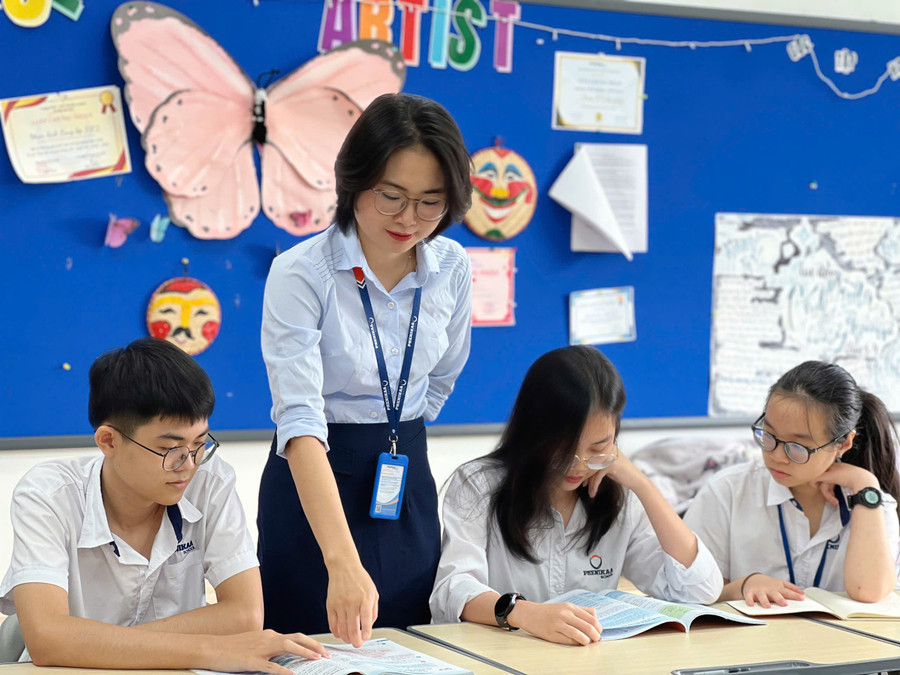
Goals to 2030 and 2035, vision to 2045
The resolution sets out the following targets for 2030:
Expand equitable access and improve the quality of preschool and general education to reach advanced levels in the Asian region. Build a network of basic schools to meet the learning needs of students of all subjects and regions; have at least 80% of general schools meet national standards.
Complete universal preschool education for children from 3 to 5 years old and compulsory education after secondary school; at least 85% of people of the right age complete high school or equivalent, with no province or city achieving less than 60%.
Achieved initial results in improving technological capacity, artificial intelligence and English proficiency at secondary level. The education index contributing to the human development index (HDI) reached over 0.8, in which the education inequality index decreased to below 10%.
Building and training human resources, especially high-quality human resources, to meet the requirements of Vietnam becoming a developing country with modern industry and high average income.
The network of higher education and vocational education facilities is appropriately arranged and invested in upgrading; striving for 100% of higher education facilities and at least 80% of vocational education facilities to meet national standards, 20% of facilities to be invested in modernly equivalent to developed countries in Asia.
The proportion of people of the age group studying at post-secondary levels reaches 50%. The proportion of workers with college or university degrees or higher reaches 24%. The proportion of people studying basic sciences, engineering and technology reaches at least 35%, including at least 6,000 postgraduates and 20,000 people studying in talent programs. The human capital and research index contributing to the global innovation index (GII) is on par with upper-middle-income countries.
Elevate higher education institutions to become truly national and regional centers for research, innovation, and entrepreneurship. The network of higher education institutions plays a pivotal role in the innovation ecosystem of regions and localities, providing high-quality human resources and talents to meet the requirements of key industries and fields; recruit at least 2,000 excellent lecturers from abroad.
Increase by an average of 12% per year for the number of international scientific publications, revenue from science, technology, and innovation; 16% per year for the number of patent registrations and patent protection certificates. Strive for at least 8 higher education institutions to be in the top 200 universities in Asia, and at least 1 higher education institution to be in the top 100 universities in the world in a number of fields according to prestigious international rankings.
Target by 2035: The education and training system continues to be modernized, with strong and steady progress in access, equity and quality. Complete universal secondary education and its equivalent; the education index contributing to the HDI reaches over 0.85; the human capital and research index contributing to the GII reach above the average of upper-middle-income countries. Strive for at least 2 higher education institutions to be among the top 100 universities in the world in a number of fields according to prestigious international rankings.
Vision to 2045: Vietnam has a modern, equitable and high-quality national education system, ranked among the top 20 countries in the world. All people have the opportunity to learn throughout their lives, improve their qualifications and skills and develop their personal potential to the fullest. High-quality human resources, scientific and technological talents become the driving force and core competitive advantage of the country, contributing to making Vietnam a developed, high-income country. Strive for at least 5 higher education institutions to be in the top 100 universities in the world in a number of fields according to prestigious international rankings.
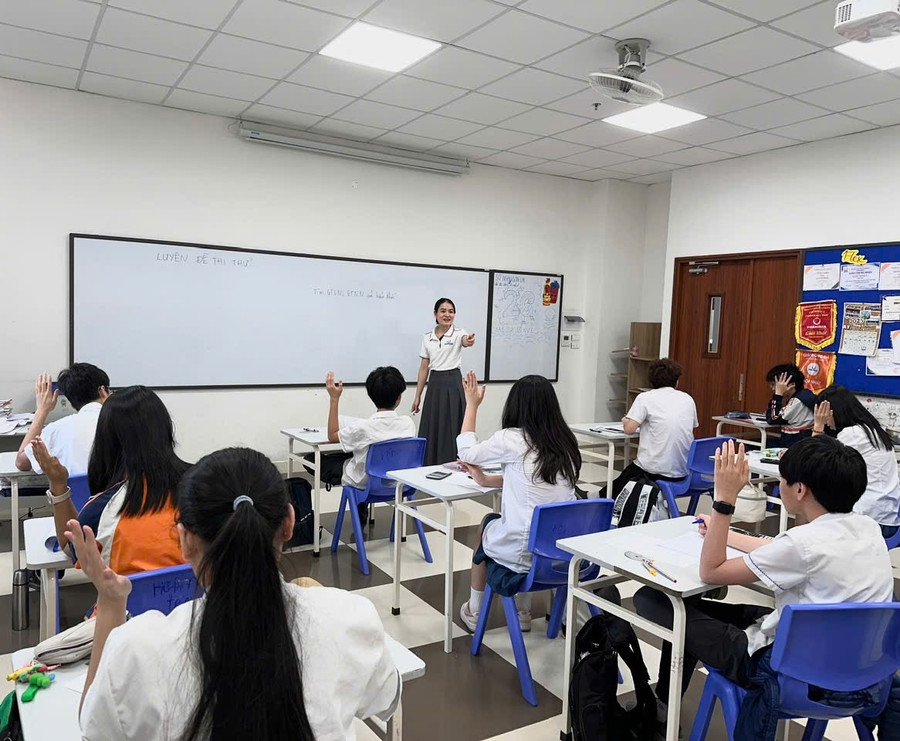
8 tasks, solutions
To achieve the above goals, the Resolution sets out 8 groups of tasks and solutions.
Firstly, raise awareness, innovate thinking and action, and determine strong political determination to make a breakthrough in education and training development.
Accordingly, thoroughly and deeply grasp the Party's viewpoints and policies, Ho Chi Minh's thought on education and training throughout the political system and the whole society. Promote propaganda, raise awareness and the role and responsibility of all central departments, ministries, branches, socio-political organizations, local Party committees and authorities, agencies, organizations, units, enterprises and the whole population for the cause of education and training.
Continue to strongly innovate thinking in leadership and direction; strongly shift from administrative management to development creation, modern management, and drastic action. Put education and training development in the thinking of national and social management to ensure orientation, planning, and strategies for socio-economic development. Make goals, tasks, and solutions for education and training development a focus in strategies, planning, policies, programs, and development plans in all fields and prioritize resource allocation for implementation.
Strengthen the comprehensive and direct leadership role of the Party organization, especially the role of the head of the Party Committee in educational institutions. Do not organize school councils in public educational institutions (except for public schools with international agreements). Implement the Party Committee Secretary as the head of the educational institution.
Second, strongly innovate institutions, create unique and outstanding mechanisms and policies for education and training development .
Specifically, focus on perfecting legal regulations to promptly remove bottlenecks and bottlenecks in institutions, mechanisms and policies; improve the quality and effectiveness of law making and enforcement; promote innovation and create development in education and training.
Promote decentralization and delegation of authority in conjunction with resource allocation, enhance autonomy and self-responsibility of educational institutions in conjunction with effective inspection and supervision. Reduce the number of management agencies for educational institutions, ensure the principle of linking professional management responsibilities with human resource and financial management, enhance training and fostering of educational management staff in accordance with the 2-level local government model. Build an open and interconnected education system, promote lifelong learning and build a learning society.
There are special and outstanding preferential policies for teachers; increase vocational allowances for preschool and general education institutions to at least 70% for teachers, at least 30% for staff, and 100% for teachers in particularly difficult areas, border areas, islands, and ethnic minority areas.
Develop appropriate policies to mobilize talented people outside the teaching force to participate in teaching and training in educational institutions. Implement a system of joint-staff lecturers for talented people working in public service units. Have a mechanism to encourage the mobilization of talented people to preside over scientific research activities in educational institutions.
Ensure full and comprehensive autonomy for higher education institutions and vocational education institutions regardless of the level of financial autonomy. Complete regulations on staffing, standards, conditions, recruitment and appointment processes for professors, associate professors and other lecturer positions in accordance with international practices and Vietnamese reality. On that basis, assign higher education institutions and vocational education institutions to decide and implement in accordance with the school's conditions, decide on recruitment, hiring of lecturers, appointment of leadership and management positions for talented people from abroad.
Fundamentally innovate financial mechanisms and policies and investment in education and training. Allocate state budget to universities and vocational training institutions based on mission, quality and efficiency according to a unified mechanism across the sector; prioritize ordering and assigning tasks to key sectors and fields based on output results.
State budget expenditure for education and training reaches at least 20% of total state budget expenditure, of which investment expenditure allocation reaches at least 5% of total state budget expenditure and expenditure for higher education reaches at least 3% of total state budget expenditure. Agree on the policy of building and implementing a new national target program on modernization and improving the quality of education and training for the period 2026 - 2035; prioritize investment in higher education.
Expand financial support policies and preferential credit for learners, not allowing any student to drop out of school due to financial conditions. Develop and implement a talent training project, prioritizing basic sciences, engineering and technology . Establish a national scholarship fund and effectively promote other funds for talent and learning encouragement from the state budget and other legal sources to encourage learning and develop the education career.
Raise standards of educational facilities at all levels, regulate minimum areas, standards, and criteria to gradually approach regional and international standards . Prioritize clean land funds, allow flexible conversion of land use purposes to educational land; focus on site clearance, and allocate clean land for educational and training projects.
No land use fees, reduction of land rent and land tax for domestic educational institutions. No corporate income tax for public educational institutions and private educational institutions operating on a non-profit basis. Priority is given to reserving surplus state agency headquarters after reorganization for educational institutions; allowing the application of the form of leasing state-owned facilities for private educational institutions.
Develop strong enough mechanisms and policies to encourage organizations and enterprises to invest in education and training development; promote public-private partnership; expand cooperation and linkages between higher education institutions, vocational education institutions, research institutions, organizations and domestic and foreign enterprises; prioritize credit capital for education and training development projects. Develop a legal framework to form a funding fund for educational institutions to mobilize community capital.
Third, strengthen comprehensive education in morality, intelligence, physical fitness and aesthetics, forming a system of values for Vietnamese people in the new era .
Specifically, focus on perfecting the legal system, mechanisms and policies to ensure the requirements of moral education, personality and the standard value system of Vietnamese people in all areas of political, economic and social life. Clearly define the roles, responsibilities and coordination mechanisms between families, schools and society in moral education, personality and the standard value system of Vietnamese people; promote the responsibility of state management agencies, party committees at all levels and local authorities.
Building and concretizing the system of Vietnamese human values in the new era, integrating throughout the educational program at all levels. Persistently building school culture, quality culture, practical learning, practical work associated with the exemplary responsibility of the teaching staff; focusing on fostering professional ethics for the teaching staff.
Innovate teaching content and methods, improve the quality and effectiveness of education on ethics, ideals, social responsibility, cultural lifestyle, historical traditions, politics, ideology, law, economics, finance, national defense and security. Implement solutions to prevent and minimize negative impacts from market mechanisms, media and social networks.
Prevent, repel, and eventually end school violence and school drugs. Issue legal regulations to improve school nutrition and the physical health of Vietnamese people.

Fourth, comprehensive digital transformation, popularization and strong application of digital technology and artificial intelligence in education and training .
Specifically, build a data strategy to serve digital transformation and develop a national education platform that applies controlled artificial intelligence; allocate sufficient resources to invest in facilities and technology infrastructure to accelerate digital transformation, popularize and apply digital technology and artificial intelligence in management and organization of educational and training activities at all levels nationwide.
Building smart education platforms, smart textbooks and curricula; promoting the application of science and technology, artificial intelligence in innovating teaching and learning methods, testing and evaluation; promoting the application of digital education models, artificial intelligence education, smart education management, digital schools, and smart classrooms.
Develop a national education and human resources information system, interconnect with the labor market and employment information system, and integrate scientific, technological, and innovation information of educational institutions.
Improve digital and artificial intelligence competency standards for learners and teachers at all levels, incorporate them into educational programs, and promote creative and experiential activities. Have policies to encourage and mobilize businesses and higher education institutions to participate in training teachers and learners in digital and artificial intelligence competency.
Fifth, focus on building a team of teachers and standard school facilities, improving the quality of preschool and general education.
Specifically, taking care of children's education from the very beginning, preparing sufficient conditions to implement universal preschool education for children from 3 to 5 years old.
Review and complete standards and regulations, ensure the quantity, quality and structure of the teaching staff; arrange sufficient number of teachers and staff according to prescribed standards; improve the quality of training and fostering of teachers and educational managers; promote the implementation of preferential policies, attract excellent students to study pedagogy; build public housing, create favorable conditions for teachers from far away to work.
Focus resources on investing in solid construction and modernization of schools and classrooms; ensure adequate facilities and equipment that meet standards, especially focusing on investing in practice classrooms, STEM/STEAM experiences, play spaces, and physical training environments. Complete the construction of a network of boarding schools in ethnic minority, disadvantaged and border areas before 2030. Expand the university preparatory training system for students from ethnic minorities and mountainous areas. Ensure that each province and city has at least one specialized educational institution up to high school level.
Focus on ideological, traditional, ethical, physical, aesthetic education, career education, soft skills; increase the duration of science, technology, information technology, and art subjects; research and integrate knowledge about digital skills and artificial intelligence into the general education program. Review and evaluate the implementation of the General Education Program; ensure the provision of a unified set of textbooks nationwide, striving to provide free textbooks to all students by 2030.
Shifting strongly to modern, active educational methods, enhancing self-study, creative experience, guiding students to develop independent thinking and problem-solving skills; continuing to innovate assessment methods, ensuring honest assessment of learning and teaching results; synchronously implementing solutions to overcome the widespread situation of extra teaching and learning .
Innovate the model of specialized schools and gifted schools to focus on nurturing national talents, expand specialized STEM/STEAM classes. Strengthen foreign language teaching and learning, gradually make English the second language in schools and teach languages of neighboring countries. Raise English standards for teachers and students at all levels; ensure sufficient quantity and qualifications of teachers, facilities and technology, strongly apply artificial intelligence in teaching and learning English; strengthen teaching subjects in English in places with conditions.
Sixth, reform and modernize vocational education, creating a breakthrough in developing human resources with high vocational skills .
Specifically, focus on developing the system of vocational training institutions; rearranging and reorganizing existing vocational training institutions to ensure they are streamlined, efficient, and meet standards; selecting investments to upgrade facilities that operate effectively, prioritizing modern investment for a number of high-quality colleges that meet international standards. Strongly decentralizing the management of vocational training institutions to local authorities.
Reform the vocational education model, supplement secondary vocational education level equivalent to high school level; strongly innovate training programs and methods, apply technology, quality management, ensure effectiveness and substance according to international standards. Complete mechanisms and policies to promote school-enterprise linkage, enhance training at enterprises to meet market requirements, especially vocational skills training in high-tech fields. Order and assign training tasks for teachers and lecturers of vocational education from the state budget.
Prioritize budget allocation from the state budget for training highly skilled human resources in technical and technological fields and serving national strategic and key programs and projects. Develop and implement high-quality vocational training programs for ethnic minorities in appropriate occupations.
There are policies to attract experts and highly skilled workers to participate in teaching and guiding vocational skills . Encourage businesses to establish vocational training facilities . There are mechanisms to establish a fund for training human resources of businesses, encourage businesses to support retraining and training to improve skills for the workforce.
Seventh, modernize and improve university education, create breakthroughs in developing highly qualified human resources and talents, and lead research and innovation .
Specifically, urgently develop a strategic framework for higher education development. Implement the arrangement and restructuring of higher education institutions; merge and dissolve substandard higher education institutions; eliminate intermediate levels, ensure streamlined, unified and effective management; study the merger of research institutes with higher education institutions. Strengthen state management of higher education institutions, study the transfer of some universities to local management to improve management efficiency and better meet local human resource training requirements.
Invest in modernizing technical infrastructure, expanding development space for universities to operate effectively. Focus on investing in upgrading facilities, laboratories, building excellent training and research centers at key universities and teacher training institutions. Invest heavily and have special, outstanding mechanisms to develop 3 to 5 elite universities following the model of international-class research universities, training national talents. Prioritize funding for scientific research, especially basic research associated with postgraduate training at universities.
Encourage the planning and construction of high-tech urban areas - universities; strongly promote the development of higher education institutions according to the model of innovative universities, new-generation technological universities, becoming the locomotive and core in the innovation ecosystem of the regions; support the effective implementation of State - School - Enterprise cooperation. Have an effective support mechanism for lecturers and learners to implement start-up and innovation projects, establish start-up companies, and start-up companies.
Expand training programs and projects, develop the teaching staff, increase support for lecturers to study and improve their qualifications domestically and internationally. Develop a program to attract excellent lecturers from abroad with outstanding incentives.
Strongly innovate training programs according to international standards; integrate content on data analysis and artificial intelligence, entrepreneurship and startups. Support the expansion of talent training programs, postgraduate training linked with scientific research, innovation in basic science, engineering and technology, especially strategic technology, priority technology of industry 4.0, industries serving key national projects. Link training activities with research, development of science, technology, innovation, national digital transformation.
Develop a project to innovate university admissions in the direction of properly assessing learners' abilities, ensuring unified control of input standards of training majors and training institutions and strictly controlling output quality. Strengthen quality management in conjunction with appropriate support policies for doctoral training, training in pedagogy, health, law and key industries; strictly regulate doctoral studies for officials and civil servants.
Eighth, promote deep international cooperation and integration in education and training.
Specifically, expand, diversify and deepen international cooperation mechanisms in education, training and scientific research. Strengthen the application of international standards in the national education system in accordance with Vietnam's conditions and circumstances .
Promote negotiations and signing of agreements and treaties on cooperation in education, training, science and technology; participate in organizations to ensure quality and develop international education . Grant scholarships or have policies to encourage and support students and lecturers to study, research and lecture in developed countries, countries with traditional relations, with strengths in key fields and industries, and take advantage of bilateral cooperation programs.
Complete mechanisms and policies to effectively support higher education institutions in cooperating and linking with prestigious universities and large enterprises abroad, especially in key areas and emerging technologies; encourage cooperation and training links according to digital and cross-border education models.
Promote attracting foreign investment in the fields of higher education and vocational education; promote cooperation and association to establish joint training units and research institutes with Vietnamese educational institutions.
Strengthen quality management, ensure cultural security, promote education in Vietnamese language, history, culture, geography and people in educational institutions and educational programs with foreign elements.
Encourage and support Vietnamese educational institutions to establish branches, open representative offices or implement educational programs abroad; promote cooperation, expand Vietnamese language teaching, and spread Vietnamese cultural values and traditions abroad, especially in the overseas Vietnamese community .
The National Assembly Party Committee shall lead and direct the review and completion of laws on innovation and development of education and training; closely coordinate with the Government Party Committee to institutionalize them into specific Resolutions on a number of guidelines and policies stated in this Resolution and allocate sufficient resources for implementation from 2025; and strengthen supervision of implementation according to regulations.
The Government Party Committee shall lead and direct the development of an Action Program to implement the Resolution and promptly develop and submit to competent authorities for approval the National Target Program on modernization and improvement of the quality of education and training, to be implemented from 2026. Take the lead and coordinate with the National Assembly Party Committee to proactively and promptly review and decide on mechanisms, policies and solutions not specifically mentioned in Part III above to effectively implement the viewpoints and objectives of this Resolution; select and effectively implement a number of contents from the 2025-2026 school year.
The Party Committee of the Fatherland Front and central mass organizations lead and direct the development of programs and plans to guide and mobilize people to implement the Resolution, promote the role of supervision, social criticism, and participate in the development of laws and policies on innovation and development of education and training.
The Central Propaganda and Mass Mobilization Commission shall preside over and coordinate with relevant agencies to organize the dissemination and propaganda of the contents of the Resolution.
Provincial and municipal Party Committees shall lead, direct, thoroughly grasp and seriously implement the Resolution, ensure adequate investment resources for education and training, and strengthen inspection and supervision of the Resolution's implementation process in localities.
The Government Party Committee shall preside over and coordinate with the Central Policy and Strategy Committee, the Central Propaganda and Mass Mobilization Committee, and the Central Party Office to monitor and evaluate the implementation results of the Resolution and report to the Politburo for direction.
Source: https://giaoducthoidai.vn/bo-chinh-tri-ban-hanh-nghi-quyet-ve-dot-pha-phat-trien-giao-duc-va-dao-tao-post745943.html



![[Photo] Multi-colored cultural space at the Exhibition "80 years of the journey of Independence - Freedom - Happiness"](https://vphoto.vietnam.vn/thumb/1200x675/vietnam/resource/IMAGE/2025/8/26/fe69de34803e4ac1bf88ce49813d95d8)
![[Photo] Prime Minister Pham Minh Chinh chairs meeting of National Steering Committee on International Integration](https://vphoto.vietnam.vn/thumb/1200x675/vietnam/resource/IMAGE/2025/8/26/9d34a506f9fb42ac90a48179fc89abb3)
![[Photo] Prime Minister Pham Minh Chinh receives CEO of Samsung Electronics](https://vphoto.vietnam.vn/thumb/1200x675/vietnam/resource/IMAGE/2025/8/26/373f5db99f704e6eb1321c787485c3c2)
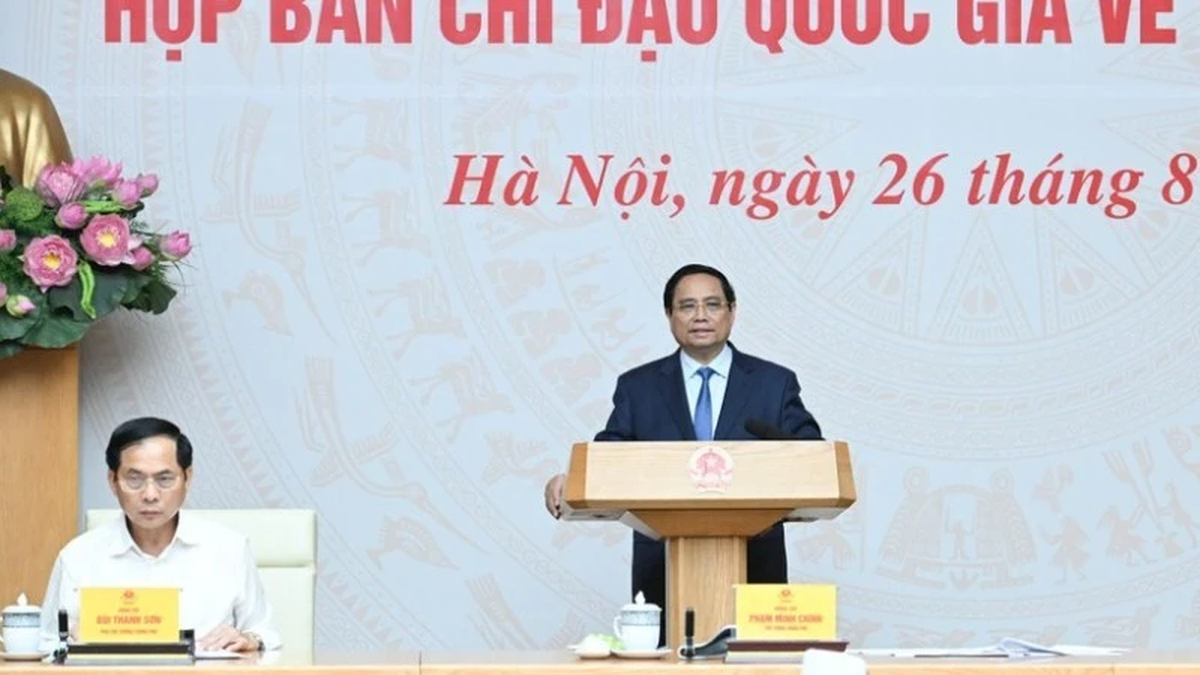
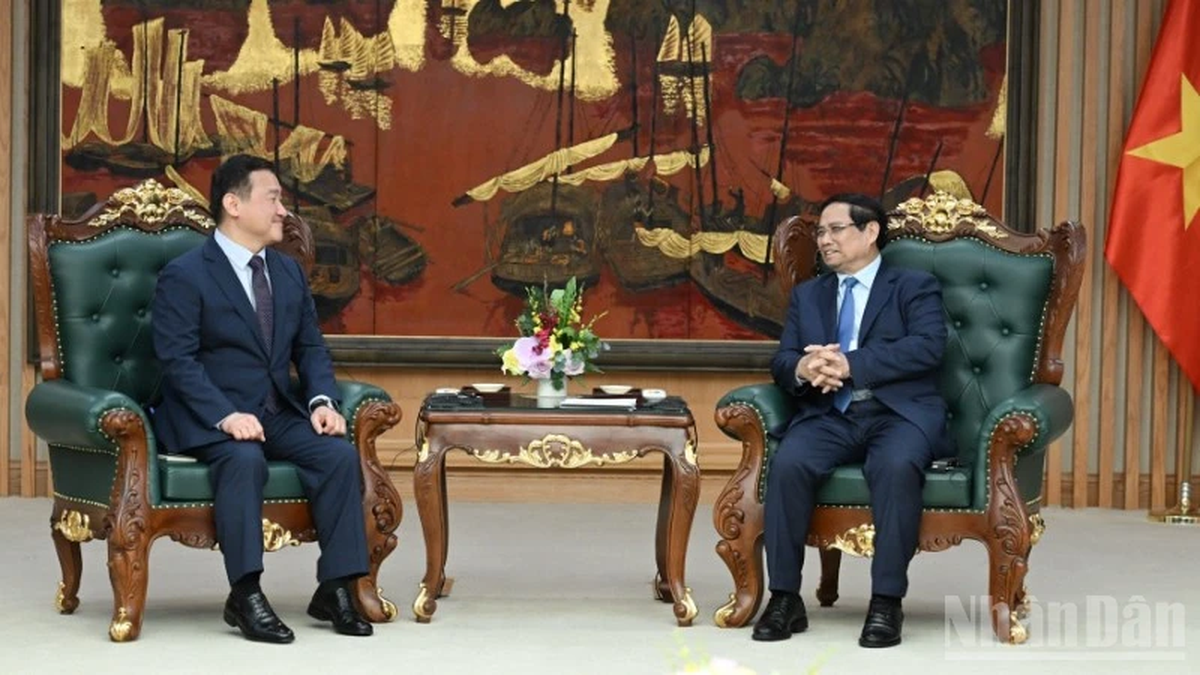

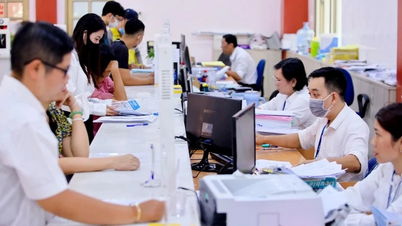

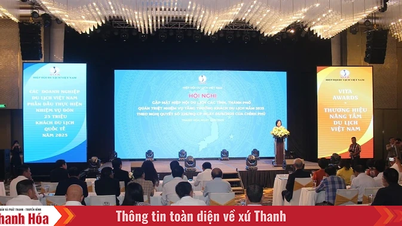

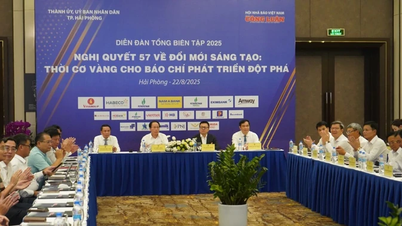

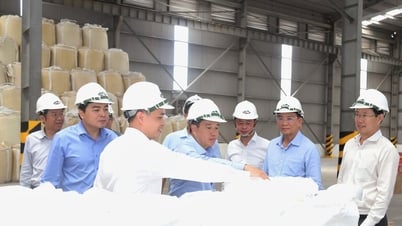

![[Photo] Politburo works with the Standing Committee of Da Nang City Party Committee and Quang Ninh Provincial Party Committee](https://vphoto.vietnam.vn/thumb/402x226/vietnam/resource/IMAGE/2025/8/19/b1678391898c4d32a05132bec02dd6e1)


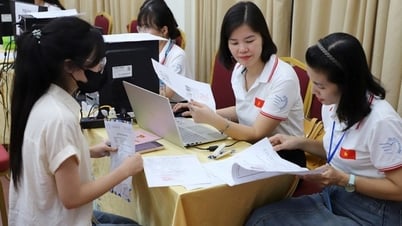

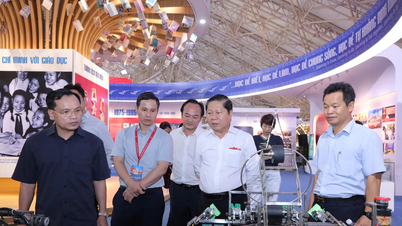
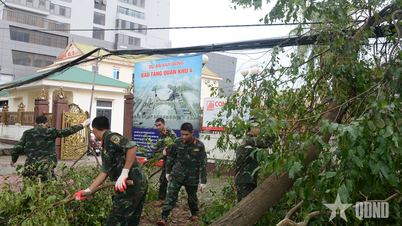

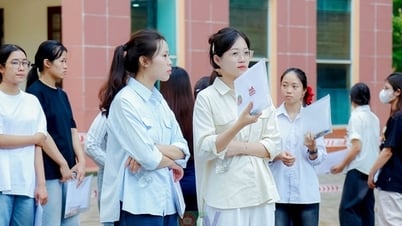

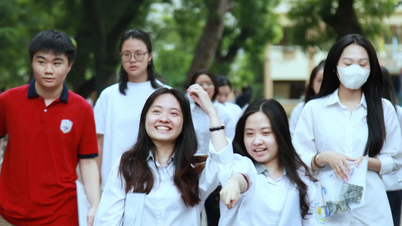
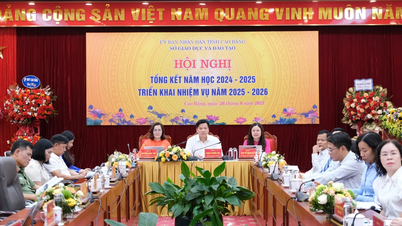




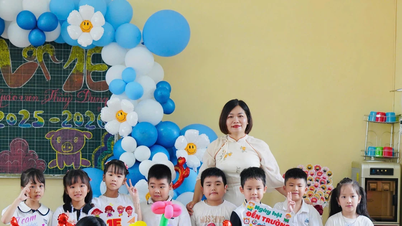
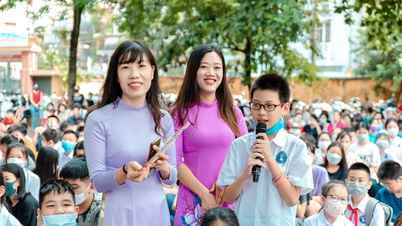
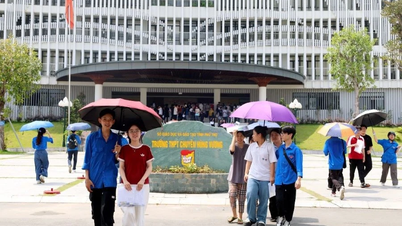
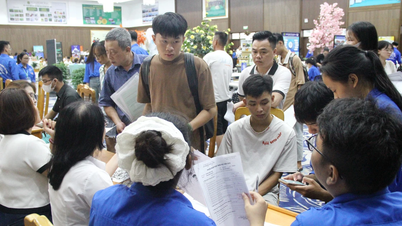
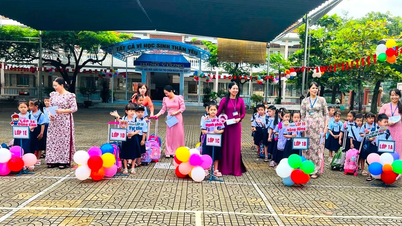


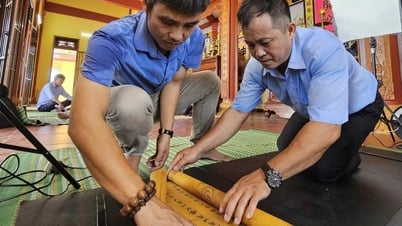











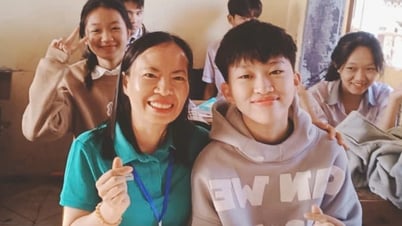

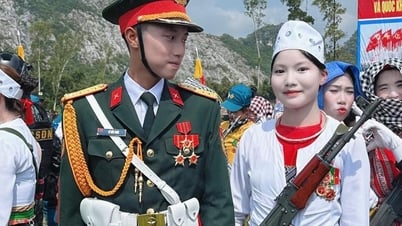

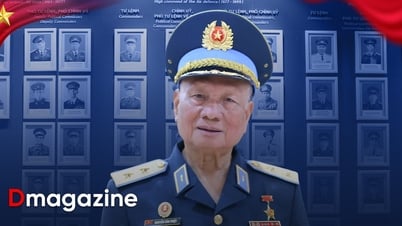
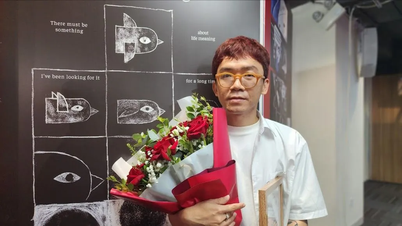






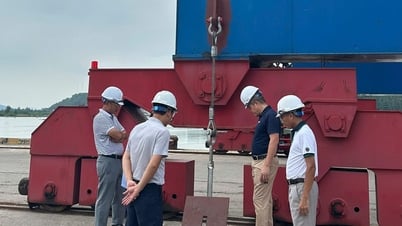



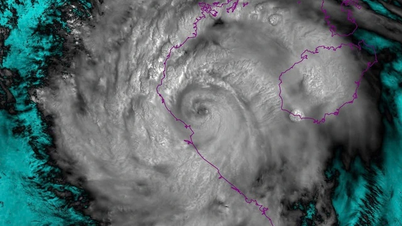


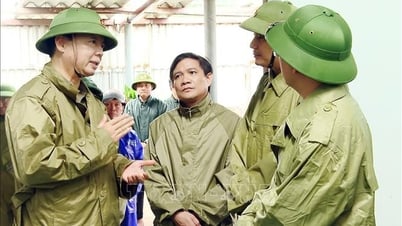

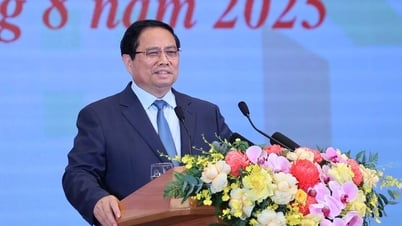
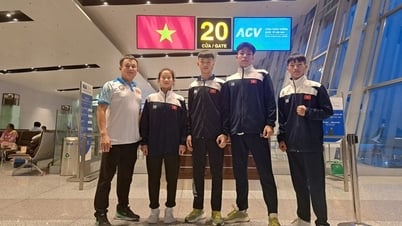

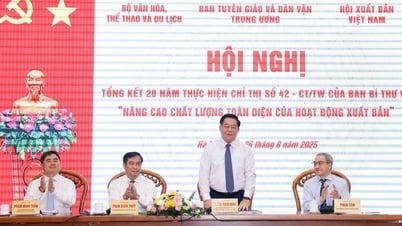
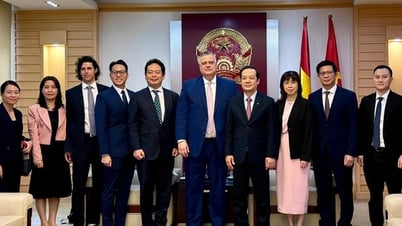

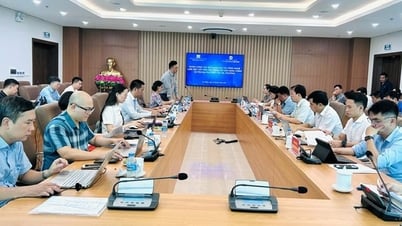
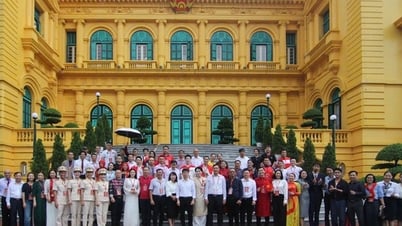
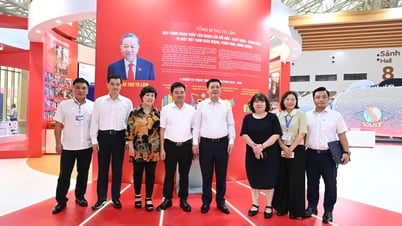





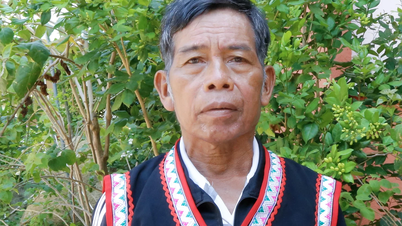


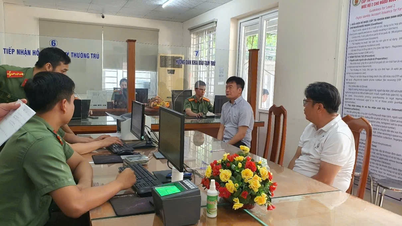



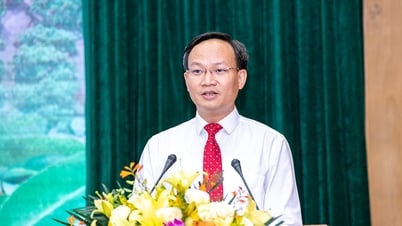


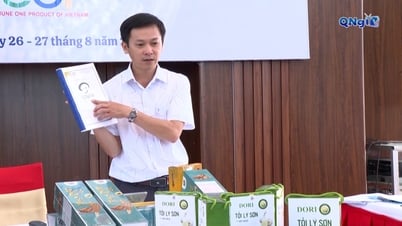








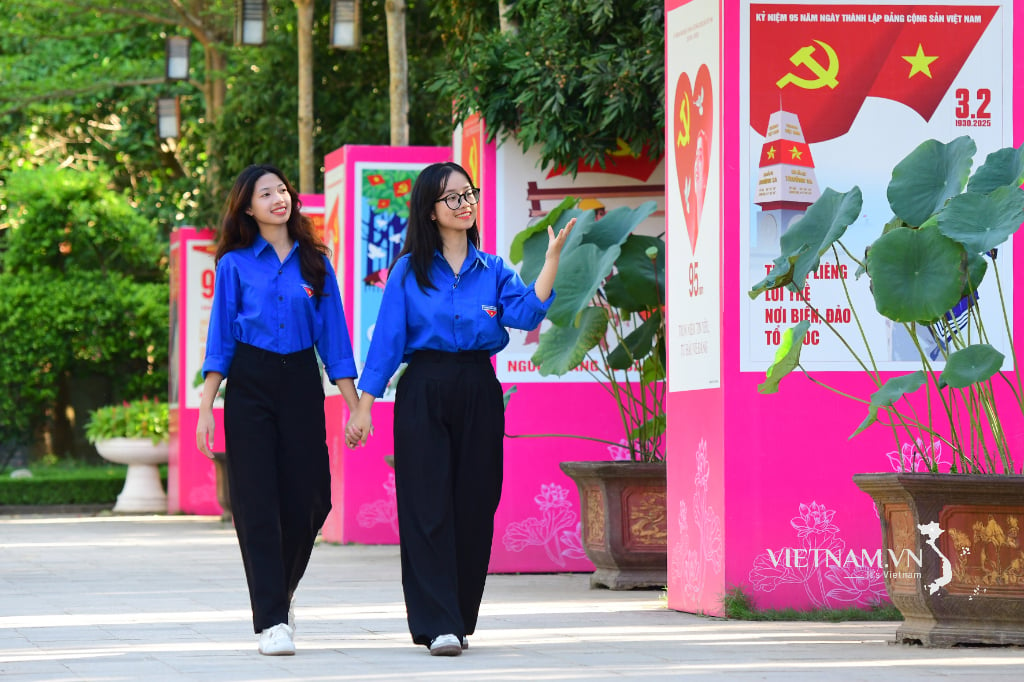
Comment (0)